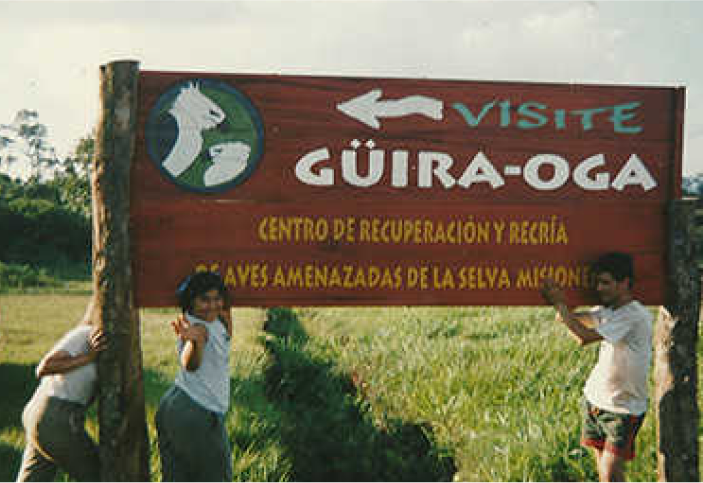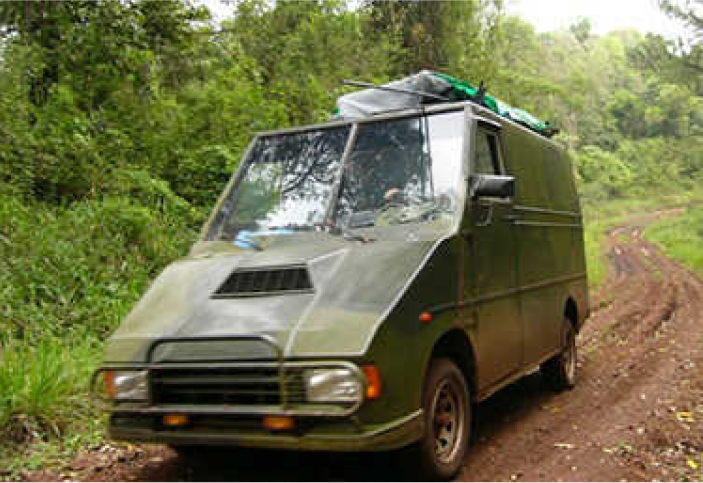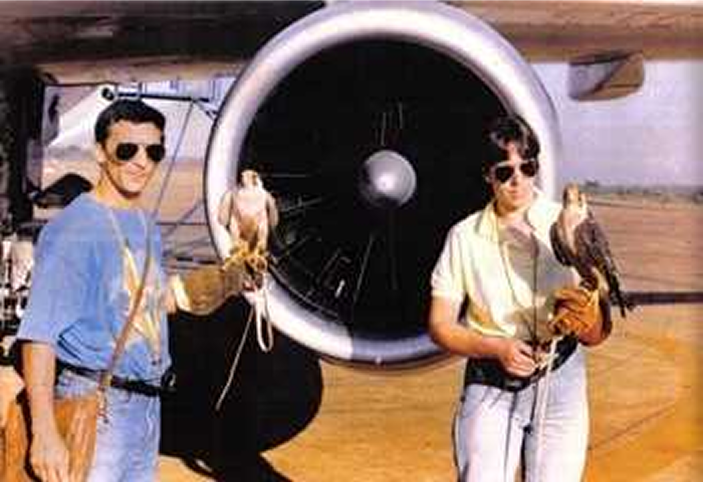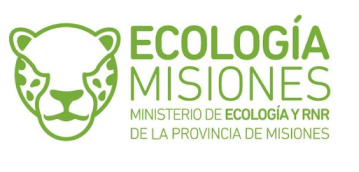
Wow it all started
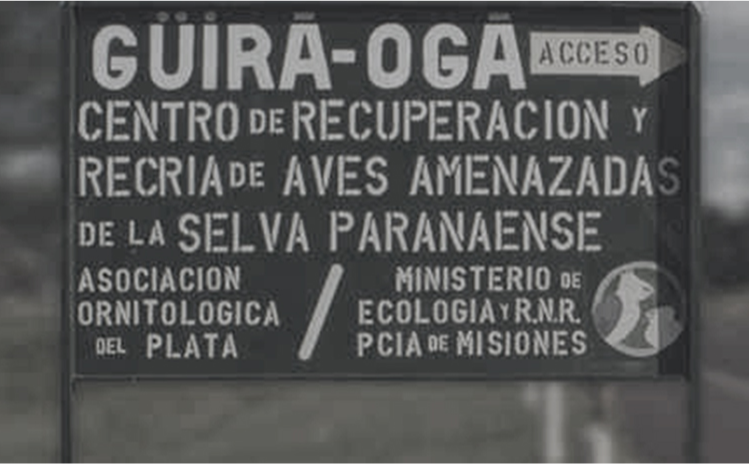
How it all started
In 1994, the Ornithological Association del Plata (Aves Argentinas) opened a branch in Misiones under the leadership of Juan Carlos Chébez, a renowned environmentalist in Argentina.
It was within this organisation that Jorge and Silvia presented a project for the conservation of endangered birds in the Atlantic rainforest in Misiones.
The main targets were jungle eagles, some parrots, the yacutinga (a threatened jungle guan), and the macuco (the largest species of partridge in the world). The idea was to rescue and rehabilitate birds confiscated by provincial authorities, injured by poachers, or handed over voluntarily by the local population.
Releasing those that could survive in the wild was their main motivation. Those that could not survive in the wild would be moved to specially adapted enclosures, and their offspring could be released. Environmental education was seen as the key to demonstrating that much needs to be done to conserve nature and that each one of us can play a valuable role.
On May 23, 1996, the government of the Province of Misiones handed over the land, and on August 23, 1997, GüiráOga was inaugurated.
Jorge and Silvia’s idea was always to avoid cutting down trees for the construction of buildings and infrastructure. The buildings were constructed in places where storms or human activity had already left gaps in the forest. Palo rosa trees, red anchicos, earpod trees, Yellow Poincianas, and Jungle cedars, among others, provide an exceptional setting for this project. Some 150 species of wild birds frequent the area, many of which are considered difficult to observe. Unique species such as the Bat falcon (Falco rufigularis), the Common Potoo (Nyctibius griseus), and the red-rumped cacique (Cacicus haemorrhous) nest in the area.
Little by little, the first part of the project was completed. Many volunteers joined in, and others also made donations to support the project in its early stages. Special underground cabling was used to transmit electricity from Route 12 to the heart of the shelter, avoiding the environmental and visual impact of this artificial obstacle in the jungle.
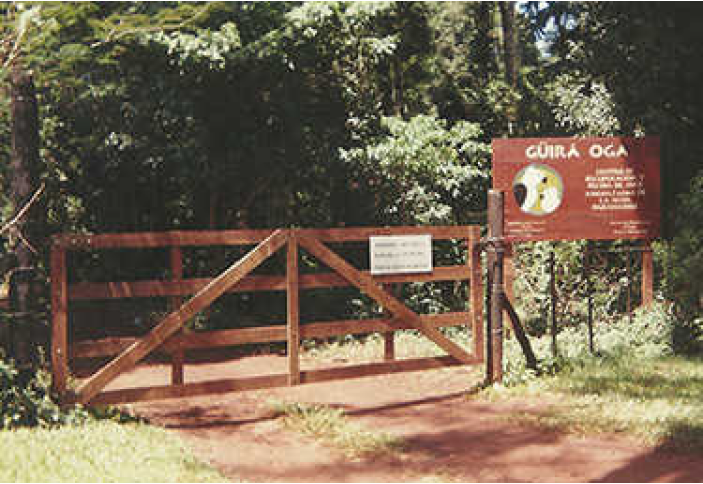
Every enclosure, trail, walkway, and facility bears the GüiráOga imprint, with everything being done by the centre’s staff. Since the project’s initiation in 1996, existing works have generally been conceived under the direction of its founders. The jungle property is characterized by its respect for the existing forest, with no trees being removed for construction. Everything has been erected in places where the forest had been damaged by storms, where trees had fallen, or where humans had already been. Everything was planned to reduce the impact on the existing wildlife. No overhead cables (which would endanger the lives of birds) have been used, as they would collide with them, in addition to the visual impact that a network of cables between facilities would have in the middle of the jungle. Everything has been planned to prove that it is possible for humans to coexist with the jungle. Even the enclosures were designed to reduce the danger of falling trees during storms.
Generally, GüiráOga’s resources are very limited, and creativity must be used to “stretch” those resources. For example, in 1999, Jorge Anfuso and Silvia Elsegood ventured into the province to survey various harpy eagle nests that had been located in previous years and other data on suspected nests. They needed an all-terrain vehicle that could also serve as sleeping quarters. Jorge designed and built such a vehicle, which was used throughout the Harpy Eagle Survey Campaign in 2000. Today, that same vehicle is used to transport visitors. When they began surveying Palacio Island in 1998, they realized that with the limited means of transportation available to them, it would be very difficult to complete a full survey, so they designed and built a boat. Since 2004, it has served the purpose it was built for.
Born out of the effort, passion, and enthusiasm of its founders, GüiráOga continues to this day with the same spirit, demonstrating that the value of craftsmanship and “homemade” products can sustain a conservation project like GüiráOga, which has already transcended the borders of our country.
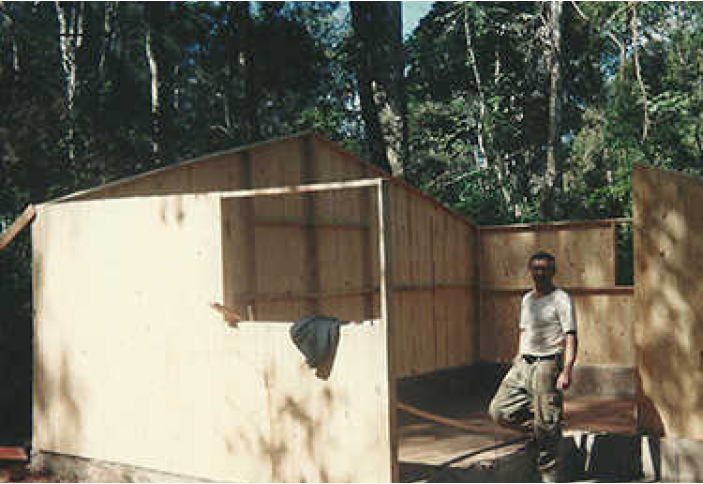
Jorge and Silvia had the necessary infrastructure and financial backing to start the project, which they presented to the Ministry of Ecology of the Province of Misiones via the La Plata Ornithological Association. The ministry granted them the land on which to start the project, and so GüiráOga was formed: The Centre for the Recovery and Breeding of Endangered Birds of the Atlantic rainforest in Misiones, also known in the region as “Casa de los Pájaros” (House of Birds), from the Guaraní language: Guirá = birds, Oga = house.
Por iniciativa de Juan Carlos Chébez, Luís Rey (Cámara de Representantes de la Provincia de Misiones) y Claudio Álvarez (Ministro de Ecología), se cede el predio de 20 hectáreas denominado “Paisaje Protegido” bajo ley provincial Nº 3468. Lleva el nombre de Andrés Gaspar Giai, en homenaje al naturalista que realizó las primeras investigaciones en el norte de la Provincia de Misiones
Dentro de esa entidad Jorge y Silvia presentan un proyecto para la conservación de las aves en peligro de extinción de la selva misionera.
Las águilas selváticas, algunos loros, la yacutinga (una pava monte amenazada) y el macuco (considerada la perdiz más grande del mundo) forman parte del objetivo principal. La idea era el rescate y recuperación de aves decomisadas por autoridades provinciales, heridas por cazadores furtivos o entregadas voluntariamente por la población.
La liberación de aquellas que podrían sobrevivir en la naturaleza era su gran motivación. Las que no contaban con esas posibilidades y debían quedar en cautiverio, pasarían a recintos perfectamente adaptados y sus crías podrían ser liberadas. La educación ambiental constituiría la herramienta fundamental para demostrar que en la difícil tarea de conservar la naturaleza hay mucho por hacer, y que el compromiso de cada uno de nosotros es muy valioso.
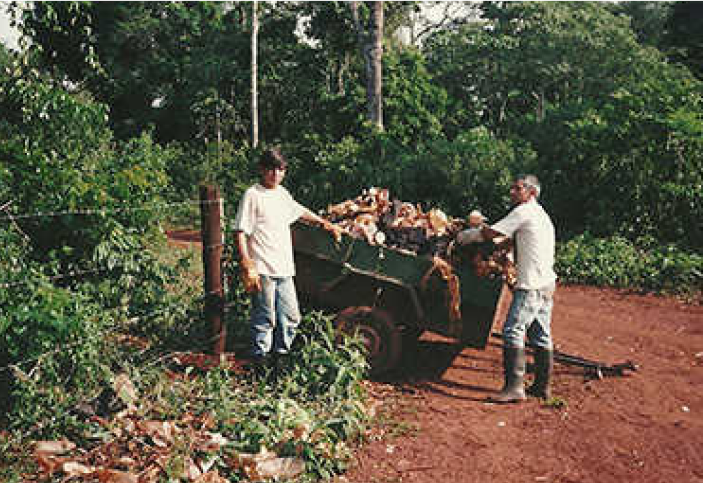
The goal was to prevent the deterioration caused by this kind of infrastructure in the jungle, thus demonstrating that when humans set their minds to it, they can live in peace and harmony with their surroundings. Thanks to the care with which this work was carried out alongside the Iguazú National Park, in 2003, they received the “Conserving the Future” award from the National Parks Administration, one of the many distinctions obtained over the years.
The first animal officially admitted was a black howler monkey or carayá monkey (Alouatta caraya). It was followed by deer, wild cats, and other mammals. Little by little, those initial facilities, which were built to house only birds, became filled with other animals. This forced us to build new infrastructure to provide shelter for different species of our local wildlife
In 2007, GüiráOga was reopened with the arrival of the Félix de Azara Natural History Foundation under a new agreement with the Ministry of Ecology and Renewable Natural Resources and Tourism. The Azara Foundation then managed in the private sphere the funds necessary for the construction of new enclosures, walkways, and other structures.
